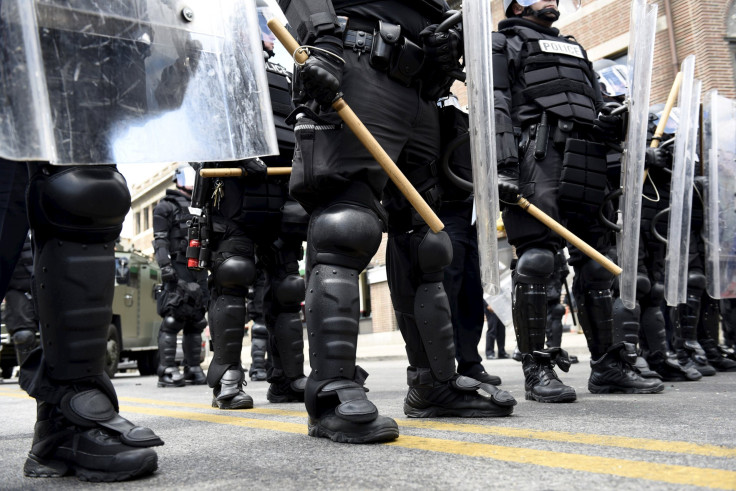Baltimore Riots 2015: Anger Festers Under Curfew-Induced Calm

BALTIMORE -- After the looting and violence that plunged the city into chaos Monday, a protest on Tuesday near a looted and fire-torn CVS store, where a burnt smell permeated the block, had a markedly different tenor. But despite the peaceful nature of the protest at the corner of Pennsylvania and Washington Avenues, and people mostly obeying the new 10 p.m. curfew, anger and frustration over how police treat Baltimore’s black residents still came through.
Tyreica Washington, a 28-year-old Philadelphia resident who does housekeeping for two hospitals, said he was drawn to Baltimore’s plight and wanted to witness Tuesday’s protest. Washington said he shared a commonality with Freddie Gray, the 25-year-old black Baltimore man who died last week of a spinal injury in police custody, and other blacks who had bad encounters with the police.
“Where I’m from, stuff like this, it’s everyday,” he said. “I got pulled over by the cops and they locked my keys in the trunk because I was being 'smart.'” Washington said the officer characterized him as “being smart” because he asked for the officer's superior to explain why he was being stopped.
“You’re judged in America for being black,” he said. “If you have a certain look, you’re a suspect.” Washington said he always makes sure he has his two hospital IDs with him at all times, adding that sometimes that’s not enough to convince police he is abiding by the law.
“The hardest job in America is being a black man doing something positive because they don’t want to see you doing good,” he said.
The corner of Pennsylvania and North Avenues has become ground zero for the Baltimore protest movement, which sprung up after Gray’s death and after the looting of the CVS on Monday. The diverse crowd gathered there ranged from girls dancing on rollerskates to Bloods and Crips -- gang members from warring factions -- linking their arms at the front of the protest line where riot cops equipped with shields were ready to respond.
#BaltimoreUprising pic.twitter.com/OSw9y3wiwZ
— Howard Koplowitz (@HowardKoplowitz) April 28, 2015Spankey Johnson, a 39-year-old man from southwest Baltimore, said a confluence of factors led to Gray’s death and the resulting protests, including police officers who have no connection to the community and children growing up with one parent.
“In the inner city, the police do more harm than good. They don’t know how to act in the inner city. They think all black people are hoodlums,” he said, adding that the community was partly to blame. “They [the officers] don’t care about us because we don’t care about us. Most of the inner-city kids don’t have parenting.”
As an unemployed black man, Johnson said he begins each day with a harsh reality. “Every morning I wake up, I wake up to die,” he said. “I have to prepare to go to jail or die.”
© Copyright IBTimes 2024. All rights reserved.






















